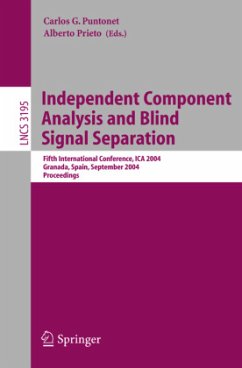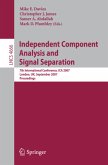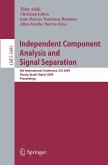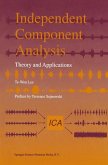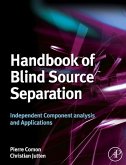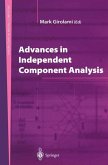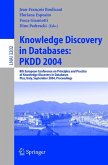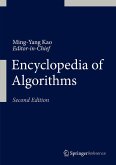In many situations found both in Nature and in human-built systems, a set of mixed signalsisobserved(frequentlyalsowithnoise),anditisofgreatscienti?candtech- logicalrelevanceto beableto isolateor separatethemso thattheinformationin each ofthesignalscanbeutilized. Blind source separation (BSS) research is one of the more interesting emerging ?eldsnowadaysinthe?eldofsignalprocessing.Itdealswiththealgorithmsthatallow therecoveryoftheoriginalsourcesfromasetofmixturesonly.Theadjective blind is applied becausethe purposeis to estimate the originalsourceswithoutany a priori knowledgeabouteitherthesourcesorthemixingsystem.Mostofthemodelsemployed in BSS assume the hypothesisabout the independenceof the original sources. Under this hypothesis,a BSS problemcan be consideredas a particularcase of independent componentanalysis(ICA),alineartransformationtechniquethat,startingfromam- tivariate representation of the data, minimizes the statistical dependence between the componentsoftherepresentation.Itcan beclaimed thatmostoftheadvancesin ICA havebeenmotivatedbythesearchforsolutionstotheBSSproblemand,theotherway around,advancesinICAhavebeenimmediatelyappliedtoBSS. ICA and BSS algorithms start from a mixture model, whose parameters are - timated from the observed mixtures. Separation is achieved by applying the inverse mixturemodelto theobservedsignals(separatingorunmixingmodel).Mixturem- els usually fall into three broad categories: instantaneous linear models, convolutive modelsandnonlinearmodels,the?rstonebeingthesimplestbut,in general,notnear realisticapplications.Thedevelopmentandtestofthealgorithmscanbeaccomplished throughsyntheticdataorwithreal-worlddata.Obviously,themostimportantaim(and mostdif?cult)istheseparationofreal-worldmixtures.BSSandICAhavestrongre- tionsalso,apartfromsignalprocessing,withother?eldssuchasstatisticsandarti?cial neuralnetworks. As long as we can ?nd a system that emits signals propagated through a mean, andthosesignalsarereceivedbyasetofsensorsandthereisaninterestinrecovering the originalsources,we have a potential?eld ofapplication forBSS and ICA. Inside thatwiderangeofapplicationswecan?nd,forinstance:noisereductionapplications, biomedicalapplications,audiosystems,telecommunications,andmanyothers. This volume comes out just 20 years after the ?rst contributionsin ICA and BSS 1 appeared . Thereinafter,the numberof research groupsworking in ICA and BSS has been constantly growing, so that nowadays we can estimate that far more than 100 groupsareresearchinginthese?elds. Asproofoftherecognitionamongthescienti?ccommunityofICAandBSSdev- opmentstherehavebeennumerousspecialsessionsandspecialissuesinseveralwell- 1 J.Herault, B.Ans, Circuits neuronaux à synapses modi?ables: décodage de messages c- posites para apprentissage non supervise , C.R. de l Académie des Sciences, vol. 299, no. III-13,pp.525 528,1984.
Bitte wählen Sie Ihr Anliegen aus.
Rechnungen
Retourenschein anfordern
Bestellstatus
Storno

